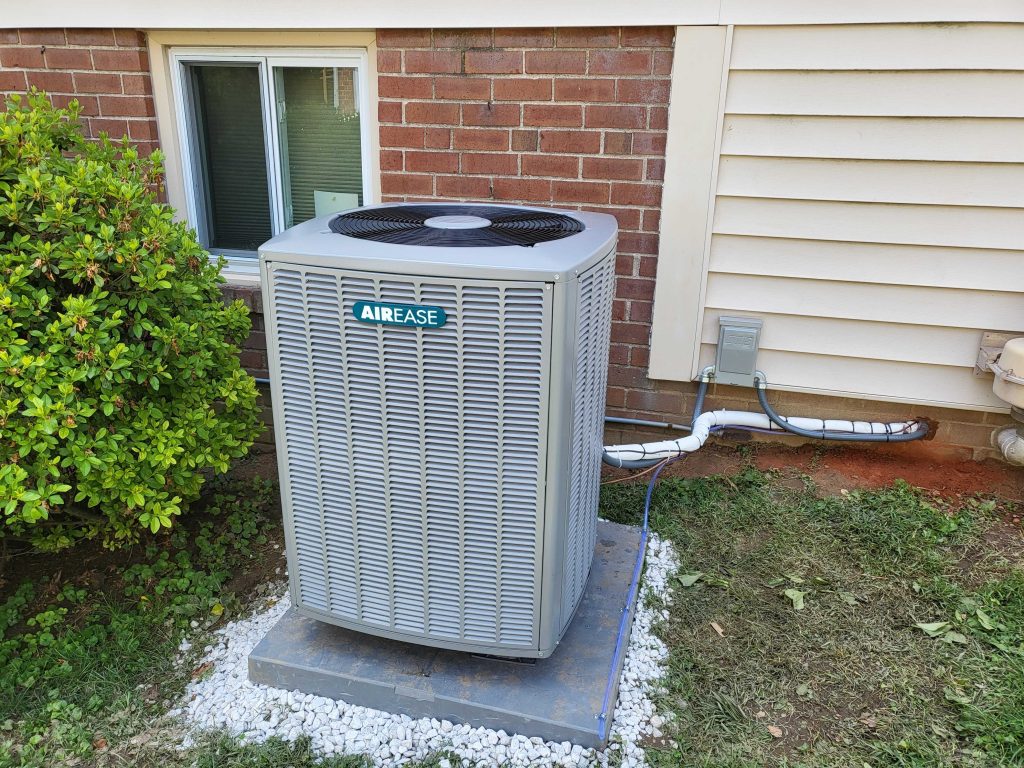Whether you rely on an air conditioner or a heat pump to keep your home comfortable, regular maintenance and prompt repairs are essential to prevent costly breakdowns. At McGinley Services, we help Ardmore homeowners address common HVAC issues like capacitor failures before they escalate into more significant problems.
If you’ve searched for “AC repair service near me”, “home air conditioner repair”, or wondered about “AC unit service cost”, this guide will give you insight into one of the most frequent HVAC issues—capacitor failure—and how to handle it.
Understanding the Role of the Capacitor
Capacitors are critical components in both air conditioners and heat pumps. These small devices provide the necessary energy to start and run the motors in your system, including the compressor, fan, and blower. Without a working capacitor, your system won’t function properly—or at all.
Signs of a Bad Capacitor:
- The system won’t turn on or has difficulty starting.
- A humming sound comes from the unit, but nothing happens.
- The system starts and stops intermittently.
- The unit runs but struggles to cool or heat your home effectively.
Since capacitors are used in both air conditioners and heat pumps, they can fail in either type of system, leaving your home uncomfortable during extreme weather.
Why Capacitor Failure Happens
Capacitors can fail due to various reasons, including:
- Age: Over time, capacitors degrade and lose their ability to hold a charge.
- Overheating: High temperatures, common during Ardmore summers, can cause capacitors to overheat.
- Electrical Issues: Power surges or fluctuations can damage the capacitor.
- Wear and Tear: Heavy usage during peak seasons can accelerate failure.
The Cost of Replacing a Capacitor
The capacitor itself is an affordable component, typically costing between $40 and $100 to purchase. However, professional installation is strongly recommended for safety and accuracy.
Why You Shouldn’t DIY:
- Safety Risks: Capacitors store electricity even when the system is off, and improper handling can result in dangerous shocks.
- Accurate Diagnosis: A failing capacitor might be just one part of a larger issue. HVAC professionals can identify any underlying problems.
- Protecting Your Warranty: Many manufacturers void warranties if repairs are done by unlicensed individuals.
Professional Replacement Costs
Hiring a licensed and insured HVAC technician ensures the job is done right. The cost for professional capacitor replacement, including parts and labor, typically ranges from $300 to $500.
Why Professional Service Costs More:
- Expertise: HVAC technicians are trained to handle electrical components safely and diagnose other potential issues.
- Diagnostic Services: Professionals ensure the capacitor failure isn’t caused by a deeper problem, such as a failing motor.
- Operating Costs: HVAC companies must cover expenses like licensing, insurance, tools, and employee wages to provide reliable service.
At McGinley Services, we provide clear, upfront pricing for all repairs and take pride in serving the Ardmore community with integrity.
Don’t Delay Repairs for Your Air Conditioner or Heat Pump
When a capacitor fails, it can put extra strain on your air conditioner or heat pump. Ignoring the issue can lead to:
- Compressor Failure: A failing capacitor can overwork the compressor, one of the most expensive parts to replace.
- Inconsistent Comfort: Your system may struggle to cool or heat your home effectively, leaving certain areas uncomfortable.
- Higher Energy Bills: A malfunctioning system uses more energy, increasing your utility costs.
Why Choose McGinley Services?
Whether you’re dealing with a broken air conditioner or a malfunctioning heat pump, McGinley Services is your trusted partner for reliable HVAC repairs in Ardmore.
What Sets Us Apart:
- Skilled Technicians: Our licensed and insured team is trained to repair all HVAC systems, including air conditioners and heat pumps.
- Prompt Service: We understand that HVAC issues can’t wait, so we prioritize fast, efficient repairs.
- Fair Pricing: Our transparent pricing ensures no surprises, with clear explanations of your repair costs.
Schedule Your AC or Heat Pump Repair Today
Don’t let a small issue like a failing capacitor disrupt your home’s comfort. Contact McGinley Services to schedule your repair today. Whether you need service for an air conditioner or heat pump, our team is here to ensure your system runs smoothly and efficiently.
Click here to learn more about our HVAC services in Ardmore, PA.
Stay cool in the summer and cozy in the winter—trust McGinley Services for all your HVAC needs!



